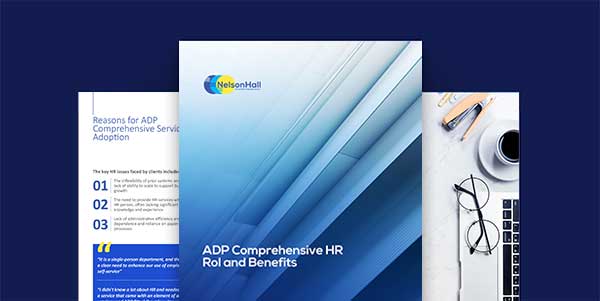The Family and Medical Leave Act (FMLA) of 1993 is a federal law that requires covered businesses with 50 or more employees to provide 12 weeks of unpaid, job-protected leave to eligible employees for qualified family or medical reasons. Understanding this law and who it covers may help you avoid a costly compliance issue. What’s more, many employees today appreciate help balancing the demands of work with the challenges of raising a child. Implementing compliant FMLA policies and procedures or creating supplemental leave policies of your own can make your organization a more attractive place to work.

What is FMLA parental leave?
Parental leave under the FMLA grants unpaid, job-protected leave for child birth, newborn care within one year of birth and care for a child placed with the employees for adoption or foster care within one year of placement. In addition, a growing number of states have begun offering paid parental leave. Program funding, wage replacement rates and length of leave vary by location.
What is paternity leave?
Paternity leave is leave provided to fathers who need time off of work to care for a newborn or recently adopted or fostered child. Parental leave under the FMLA includes paternity leave, but some organizations offer additional leave options, such as paid parental leave, including paternity leave. If you find that more women than men are taking parental leave, it may be time to update your benefit communications or educate the managers and administrators who handle leave requests. You might also want to revise your leave policies with gender neutral language so that men don’t feel excluded from parental leave.
Who can take FMLA parental leave?
Employees may be eligible for FMLA parental leave if they have been employed by a covered employer for at least 1,250 hours during the 12 months immediately preceding the leave. To be eligible, an employee also must work at a location where the employer has at least 50 employees within 75 miles. Contract workers may become eligible for FMLA parental leave under these rules if they are hired by the employer, but independent contractors are not eligible.
How long is FMLA parental leave?
Employees who qualify under the FMLA are entitled to 12 workweeks of unpaid parental leave per year. This time may be used intermittently with employer approval and usually must end within 12 months. Upon their return to work, employees are entitled to return to their same position or one that’s equivalent with equivalent pay, benefits and other terms and conditions of employment. The length of paid leave in states that offer it typically ranges from four to 12 weeks.
When can employees take FMLA parental leave?
Employees may be able to take FMLA parental leave within one year of the time they give birth to or adopt a child, or have a child placed for foster care, as long as they have been employed with a covered business for 12 months and worked at least 1,250 hours in the 12 months immediately prior to the scheduled leave.
What does the FMLA cover besides parental leave?
In addition to employees who need time off of work for child birth, adoption or foster care, the FMLA extends leave benefits to those who:
- Need to care for an immediate family member with a serious health condition
- Are unable to work because of a serious health condition
- Have a spouse, son, daughter or parent who is a member of the military and has either been deployed or notified of an impending deployment
What is school-related parental leave?
School-related parental leave generally allows parents and legal guardians to take time off from work to attend meetings and activities at their child’s school or day care. Although not covered under the FMLA, this type of leave is available in some states. Employees who take school-related parental leave may have to provide advance notice to their employer, may not be paid for this time or may have to use accrued vacation days.
Who pays for FMLA parental leave?
While FMLA parental leave may be unpaid, some employers allow or require eligible employees to use existing paid time off, such as PTO or vacation time, to run concurrently with FMLA leave. Paid programs at the state level, however, are funded in different ways. Some states impose a payroll tax on employees, while others charge both employees and employers.
FMLA parental leave FAQs
See what other employers are asking about FMLA parental leave:
Can you take state paid family leave and FMLA?
If the reason for the leave is covered under both provisions, you may be able to take both paid family leave and FMLA leave. The time off is usually applied concurrently to preserve the 12-week total. So, if you’re adopting a child and your state offers eight weeks of paid leave, you might be entitled to four weeks of unpaid FMLA leave. Similarly, you may be able or required to use any paid leave available to you to cover FMLA leave that otherwise would be unpaid.
Can FMLA be extended?
The FMLA allows for 12 weeks of unpaid leave for child birth, newborn care and adoptive or foster child care, or care for a serious health condition, but military caregivers may be eligible for leave lasting 26 weeks. In some situations, extended leave may be required if the request is a reasonable accommodation, or an employer may choose to create its own extended leave policies as an employee perk.
Does FMLA pay full salary?
FMLA leave provides for unpaid time off. However, if an employee is in a state with a paid leave program or they have paid time off under an employer-provided offering, they might be able to supplement unpaid leave with paid time off.
This article provides practical information concerning the subject matter and is provided with the understanding that ADP is not rendering legal advice or other professional services.



